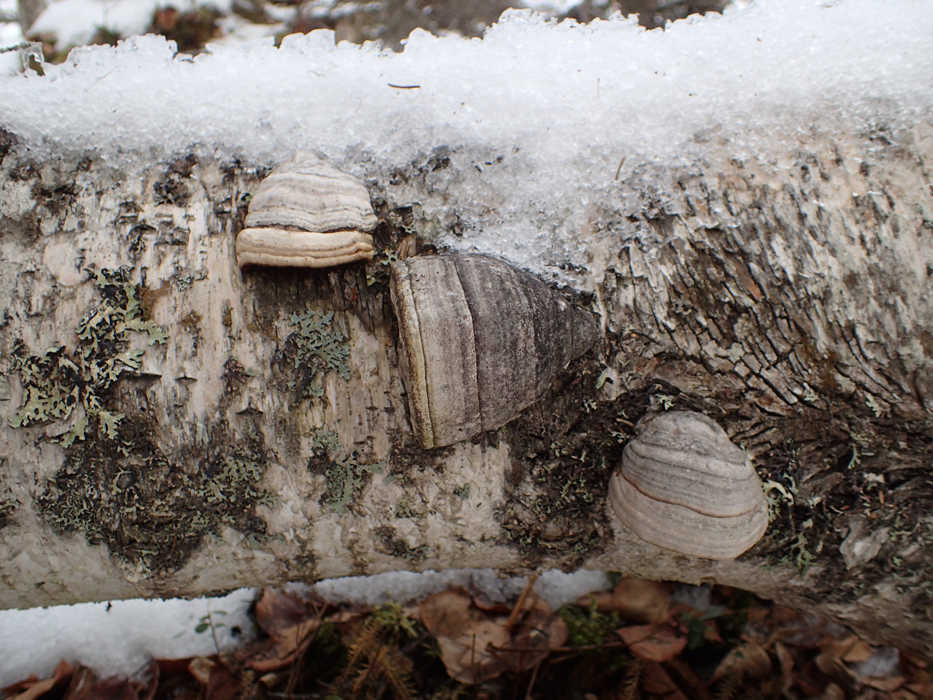A couple of years ago I was given a remarkable, beautiful hat by my friend Dominique Collet. This cap is made of a soft, brown material with decorative, stamped trim of the same. Light and velvety, it is reminiscent of wool felt but finer and smoother. Dominique had traveled through Eastern Europe specifically to learn how these amadou caps were made from a kind of tree-killing fungus.
Known by several names including hoof fungus, tinder fungus, and the “true” tinder fungus, Fomes fomentarius grows on hardwoods, especially birch, around the world in northern latitudes. It is quite common here on the Kenai and anywhere else in Alaska where birch trees grow.
Ecologically, tinder fungus acts both as a pathogen, causing wood rot and contributing to the demise of living trees, and as a decomposer, continuing to break down dead wood in snags and logs. The fungus enters the tree through damaged bark or broken branches, then ramifies through wood and bark. Woody, durable conchs of the tinder fungus appear on the outside of the tree or log and grow larger each year as new layers are added to the underside of the conchs.
By removing, soaking, and pounding the inner, fibrous tissue of the conchs, a material called amadou can be made. This amadou is soft, extremely absorptive, and highly flammable. The abovementioned hat is one example of clothing made from this material.
Tinder fungus has been used by humans for its namesake purpose for thousands of years. An extraordinarily well-preserved, 5,000-year-old mummy from the Alps known as the Ice Man had on his person in a little pouch a store of carefully prepared tinder fungus as part of an impressive fire starting kit. Remnants of this fungus have been found in excavations of even older human habitations, where they are believed to have served as tinder and as a way to transport embers in hollowed-out, slowly smoldering conchs.
Amadou’s absorptiveness is superlative. Into the 1800s, this material was widely employed by doctors, dentists, and barbers in bandaging, where it earned the name “agaric of the surgeons.” To this day, patches of amadou are carried by fly fishermen to dry wetted flies.
Various cultures have taken tinder fungus medicinally as remedies for rheumatism, hemorrhoids, bladder infections, and pain relief. Derivatives of the fungus were imbibed, smoked, and even placed on the skin and ignited. Though some extracts of tinder fungus do show promise as medicinals, I have found no conclusive studies on its medicinal properties, so it would be wise to hold off on consuming tinder fungus until we know more about it.
Learning about the uses of Fomes fomentarius has changed my perspective on this species, moving it from its place in my mind as just another of many wood-rotting fungi to a useful, available resource. I have yet to try my hand at processing tinder fungus, but I think I will soon. I would like to be able to craft a hat similar to the unique amadou cap that was given to me. I might even wear it around, but, given the material’s properties, I will not be sporting any amadou clothing anywhere near a campfire!
Matt Bowser serves as Entomologist at the Kenai National Wildlife Refuge. You can find more information at http://www.fws.gov/refuge/kenai/ or http://www.facebook.com/kenainationalwildliferefuge.

